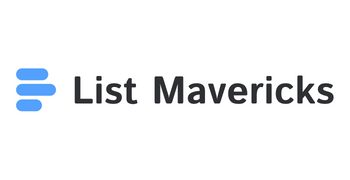Businesses looking to grow fast often consider working with an outbound marketing agency. An outbound marketing agency helps companies reach new customers through direct strategies like email outreach, calls, and targeted campaigns. These agencies not only create and run campaigns but also help with lead generation and market research to make sure efforts are focused and effective.
Outbound tactics put your message in front of the right people, rather than waiting for customers to find you. Agencies use proven methods and tools to boost responses and keep your sales pipeline full. With the right support, businesses can see better results and use their time more efficiently.
Key Takeaways
- Outbound marketing agencies create and run direct campaigns for businesses.
- These agencies help find and qualify leads to target the right audience.
- Picking the right agency can improve marketing results and save time.
What Is an Outbound Marketing Agency?

An outbound marketing agency helps brands reach out directly to potential customers through methods like advertising, calling, and email. These agencies manage the whole outreach process and focus on bringing in new leads for companies that want to grow quickly or get noticed fast.
Definition and Core Services
An outbound marketing agency is a specialized marketing company that uses direct communication to connect brands with new customers. It uses tactics such as cold calls, cold emails, direct mail, display ads, and event marketing. These services are designed to create awareness and drive interest for a product or service, even if the audience has never heard of the brand before.
Core services include lead generation, campaign management, and list building. The agency may also set appointments, qualify prospects, and measure campaign results. Many companies choose an outbound marketing agency when they need to fill their sales pipeline quickly or target specific industries and accounts.
A good outbound marketing agency will often use a mix of channels to increase reach and make sure the right people are contacted. They collect and analyze data, adjusting campaigns to maximize response rates.
Differences Between Outbound and Inbound Marketing
Outbound marketing is proactive and interruption-based. It relies on making the first move, such as sending ads or emails to people who have never interacted with the brand. In contrast, inbound marketing focuses on drawing people in by offering helpful content and allowing prospects to find the company on their own.
Key differences include the way results are tracked. Outbound marketing measures success using metrics like impressions, reach, and conversion rates. Inbound marketing uses different metrics including bounce rates, time spent on page, and web traffic from search engines.
Outbound efforts are often faster at reaching large audiences, but they can be more expensive because of ad spending, event costs, and cold outreach. Inbound tends to be more cost-effective over time but is slower to deliver results. To learn more, check out what outbound marketing is.
Key Roles within an Outbound Marketing Company
There are several important roles in an outbound marketing agency. Account managers oversee projects and make sure client goals are met. Campaign strategists plan and set up outreach campaigns tailored to the right audiences. Copywriters create scripts for emails, calls, and direct mail to get potential customers interested.
Data analysts track campaign results and suggest ways to improve the process. Outreach specialists handle the day-to-day communication with prospects, such as cold calls, email blasts, and social media outreach.
Support teams manage contact lists, clean up data, and help with reporting. In larger agencies, there may also be tech support or digital ad specialists. This team structure helps marketing companies provide a full-service experience for clients wanting to build their customer base quickly.
Outbound Marketing Strategies Explained

Businesses use several outbound marketing strategies to reach new customers. Each approach pushes a clear message to its audience and aims to grab attention quickly. Choosing the right tactic depends on the target industry, budget, and business goals.
Cold Calling and Cold Email Outreach
Cold calling uses phone calls to introduce products or services to potential clients who have not interacted with the business before. Sales representatives often follow scripts, adapting their pitch to address questions and concerns. This technique lets companies reach decision makers directly, making it useful for generating new leads.
Cold email outreach works in a similar way but uses personalized emails instead of phone calls. Businesses craft messages that briefly explain their value, include a clear call to action, and are sent to carefully selected recipients. Both cold calling and outbound email marketing require follow-ups and a reliable tracking system to measure response rates and improve results.
Key Considerations:
- Segment target lists by industry or job role.
- Test different scripts or email templates for better engagement.
- Stay compliant with regulations such as GDPR or CAN-SPAM.
Direct Mail and Print Advertisements
Direct mail refers to sending promotional materials, like brochures or postcards, directly to homes or businesses. This classic strategy is effective for targeting local markets or specific customer segments. Print advertisements, found in newspapers or magazines, reach broad audiences and support brand recognition.
Both direct mail and print ads allow for creative design and can stand out with tactile features, like unique textures or shapes. Timing and frequency are important; sending mail or placing ads during peak buying seasons can boost results. Tracking codes, coupons, or unique URLs help businesses measure the impact of these campaigns.
Benefits of Direct Mail and Print Ads:
- Can be highly targeted by location or demographic.
- Tangible materials may be kept for future reference.
- Less competition for attention compared to digital inboxes.
Digital and Social Media Advertising
Digital advertising uses online channels such as search engines, display networks, and paid search to show ads to potential customers. Pay-per-click (PPC) ads appear when people search for related keywords, making them a popular choice for reaching buyers with intent. Social media advertising places ads on platforms like Facebook, Instagram, or LinkedIn, targeting users based on detailed interests and behaviors.
These tactics offer real-time analytics, so businesses can quickly see what works and adjust campaigns. Budgets can be scaled up or down with ease. Digital and social media ads can also be combined with other marketing strategies to support events, announce new products, or attract traffic to specific landing pages. Learn more about these strategies at this comprehensive outbound marketing guide.
Lead Generation and Qualification

An outbound marketing agency focuses on finding and connecting with potential buyers through direct outreach. This approach is designed to identify, target, and work with leads who are likely to benefit from a company’s product or service.
Prospecting and Appointment Setting
Prospecting begins with finding decision makers and gathering accurate contact information. Methods often include using human-sourced data, leveraging reliable databases, and researching companies online. These tactics help agencies generate leads who fit client profiles.
Appointment setting is the next step. Here, the agency reaches out to prospects by email and phone to engage interest and schedule meetings for the sales team. Agencies may use different channels based on which method prospects prefer. This process delivers more meaningful conversations and allows sales teams to focus on presenting solutions, not just cold outreach. Solutions like those from Leadium use curated contact data and optimize channels to improve response rates.
Lead Qualification and Sales Development
Not every lead is ready to buy. Lead qualification filters out prospects who do not fit the ideal customer profile or are not prepared to move forward. Agencies use advanced tools for qualification, such as CRM software and analytics platforms, to analyze prospect data.
Sales development teams take qualified leads and nurture them through targeted messaging and follow-up. This step ensures leads stay engaged, moving them closer to a sales opportunity. Using technology, agencies can improve efficiency and accuracy, making sure only the most promising leads enter the next phase of the sales process. Firms like Calling Agency use industry-leading technology to streamline lead qualification and enhance effectiveness.
Building a High-Quality Sales Pipeline
A strong sales pipeline is built on a foundation of high-quality leads who have expressed intent and match the client’s goals. By focusing on both quantity and quality, outbound marketing agencies help businesses avoid wasted time on leads unlikely to convert.
Agencies work closely with clients to define what a high-quality lead looks like. This includes setting key criteria, such as company size, industry, budget, and decision-making power. Once leads are qualified, they are managed within a pipeline, allowing the sales team to prioritize follow-up and track progress. Agencies like Valve + Meter Performance Marketing use tailored approaches to manage efforts and maintain a healthy pipeline at every buying stage.
Targeting and Messaging Tactics

Effective outbound marketing begins with knowing exactly who to target, how to reach them, and when to deliver the right message. Careful use of research, personalization, and timing helps an outbound marketing agency maximize results for every campaign.
Ideal Customer Profile and Market Research
Defining the ideal customer profile (ICP) is the first step. Teams look at factors such as company size, geographic location, industry, and buying behaviors. They use this data to create a profile of customers most likely to need the service or product.
Market research provides insight into customer needs, common pain points, and buying motivations. Agencies gather information from surveys, interviews, and public data. This process helps identify the best markets and segments to pursue.
Once the ICP is clear, campaigns reach only the most relevant audience. This targeted approach means marketing budgets are used efficiently. It also helps increase engagement and response rates. More on how audience research shapes strategy is available from guides on outbound marketing tactics.
Personalized Outreach and Messaging
Agencies craft personalized outreach by tailoring messages and offers to each segment or even to individual leads. They address known pain points and use the prospect’s actual name, role, or company in communications.
Email campaigns, cold calls, and even LinkedIn messages are made personal. For example, the language used in an email is different for a marketing manager compared to a CEO. This personalized messaging catches attention and feels less generic.
Segmentation tools and automation platforms help make this process scalable. Test groups and A/B testing refine messages to see what works best. Purposeful, customized communication makes customers more likely to respond or convert. More details are described in marketing strategy overviews such as this guide.
Account-Based Marketing and Retargeting
Account-based marketing (ABM) targets high-value accounts using research and customized campaigns. Agencies identify key decision-makers in target companies and then develop messaging specific to their business challenges.
Outreach may involve a combination of emails, calls, social media messages, and even events tailored just for key accounts. ABM allows for personalized touches that drive higher engagement in B2B settings.
Retargeting uses data to re-engage users who have interacted with the brand but not yet made a purchase or inquiry. Ads or emails remind them of the solution and keep the brand top of mind. This method makes sure opportunities are not missed with warm leads. Solutions for ABM and retargeting are discussed in outbound lead generation strategies.
Timing the Right Message
Delivering the right message at the right time can have a major effect on results. Agencies analyze customer behavior, sales cycles, and industry events to decide on the best moments to reach out.
Timing may depend on a prospect’s stage in the buying journey. For instance, an informational email might work best early on, while a demo offer may be saved for leads who have shown more interest.
Automated tools and analytics platforms track when prospects are most active or responsive. Messaging calendars help coordinate outreach and prevent overlap. Thoughtful timing improves open rates, response rates, and the overall success of outbound campaigns. Examples and strategies for timing are found in articles by experts in outbound marketing.
Optimizing Outbound Marketing Campaigns

Successful outbound marketing needs careful measurement, ongoing testing, and the right tools. Regular monitoring and smart use of technology can sharpen a campaign’s impact and improve cost efficiency.
Performance Metrics and A/B Testing
Tracking clear performance metrics is essential for measuring success. Outbound marketing campaigns often focus on response rate, conversion rate, and cost per lead. These numbers tell agencies how well messages reach and persuade their target audiences.
A/B testing plays a key role in improving results. By comparing two versions of an ad, email, or call script, marketers can see which one works better. Small changes, like headline text or call-to-action placement, can lead to higher engagement rates.
Metrics from these tests help teams make data-driven decisions. This process can quickly reveal what is not working in a campaign so it can be fixed early. Agencies that continuously analyze metrics and test new ideas see steady performance improvement.
Automation and Sales Enablement Tools
Automation helps outbound teams manage campaigns more effectively. Platforms can schedule emails, track responses, and organize follow-ups automatically. Tools like CRM systems allow sales reps to gather contact information, record interactions, and see the full history of each prospect.
Sales enablement software supports reps with templates, case studies, and best-practice messaging. This allows teams to respond faster and with more relevant information. Automation also reduces manual errors and makes it easier to keep campaigns running smoothly.
When paired with strong sales enablement, automation boosts productivity and results. It ensures prospects don’t fall through the cracks and enables more personal communication at scale. Companies that use automation tools often find it easier to reach their outbound goals, as seen in agencies with personalized strategies.
Improving ROI and Performance Tracking
Improving the return on investment (ROI) in outbound marketing depends on accurate performance tracking. This means not just collecting data but understanding what actions generate results. Key performance indicators (KPIs) like number of qualified leads, pipeline value, and closed deals help highlight what works.
Dashboards and reporting tools present these metrics in clear, at-a-glance formats. They allow marketing and sales teams to adjust budgets, refine messaging, or change channels in real time. Frequent review ensures campaigns stay aligned with company goals.
This approach makes it easier to spot trends, eliminate wasteful tactics, and invest in high-performing strategies. Continuous tracking and fast adjustments create better campaign outcomes and higher ROI, which is key to growing organizations.
Choosing the Right Outbound Marketing Agency

For companies wanting to see real business growth, picking the right outbound marketing agency is a key step. The agency should offer proven outbound marketing services, match a clear marketing strategy, and help companies reach their goals.
Evaluating Agency Experience and Services
When reviewing agencies, they need to show strong experience in outbound marketing, especially in B2B marketing. Look for agencies that can provide details on campaigns they have run, and examine their success rates. Reliable agencies often showcase their results in terms of leads generated or deals closed.
It is useful to check the types of outbound marketing services an agency offers. These may include email campaigns, social media outreach, cold calling, and account-based marketing. Some agencies, like those listed on Sortlist, provide full-service solutions that cover multiple channels.
Use a table like the one below to compare agencies:
| Agency Name | Key Services Offered | Years in Market | Specialization |
|---|---|---|---|
| Agency A | Email, Social, PPC | 10+ | B2B Tech |
| Agency B | Telemarketing, ABM | 5 | Financial Services |
This helps set clear expectations before selecting a partner.
Ensuring Alignment with Business Goals
It is essential for the chosen outbound marketing agency to understand and align with the client’s specific business goals. The agency should start by learning the client’s target audience, industry, and main purpose—whether it is higher lead volume, increased sales, or greater brand awareness.
A good fit comes from agencies that customize their marketing strategy, not those that use the same plan for every client. Agencies with solid processes for learning about a business’s unique needs, like those recommended by AnyBiz, are often more effective.
Key alignment steps include:
- Defining clear campaign goals
- Mapping the marketing strategy to business KPIs
- Checking in regularly on campaign results
This ensures the strategy works for both short- and long-term needs.
Maximizing Long-Term Business Growth
Selecting an agency for the long term means finding one that sees beyond a single campaign. The agency should help the business adapt its outbound marketing services as the market changes. This may include integrating new channels or shifting strategies to meet emerging needs.
Look for agencies that offer ongoing support, frequent reporting, and the option to scale the marketing strategy. This is crucial for companies aiming for sustained business growth, not just a quick spike in leads.
Long-term partners provide guidance on improving messaging, new technologies, and how to make the most of every contact. This maximizes the value received from every outbound marketing effort.
Frequently Asked Questions

Outbound marketing agencies help businesses reach potential customers directly through specific methods and campaigns. These agencies use different tactics and technologies than inbound marketing methods, and decision-makers often weigh several factors when thinking about outsourcing outbound efforts.
What services do outbound marketing agencies typically provide?
Outbound marketing agencies handle cold calling, email outreach, direct mail, social media advertising, and pay-per-click ads. They also provide lead generation, appointment setting, and targeted outreach to specific industries or job titles. Some agencies offer full-service support, including strategy development and campaign management.
How do metrics for measuring the success of outbound marketing campaigns differ from those for inbound?
Outbound campaigns often focus on metrics like response rate, conversion rate, cost per lead, and number of appointments set. In contrast, inbound marketing usually tracks website traffic, organic search rankings, and content downloads. Outbound metrics are more about immediate actions from prospects than long-term engagement.
Can outbound marketing agencies guarantee a certain return on investment?
Most outbound marketing agencies do not guarantee a specific return on investment. Results can depend on factors like target audience, message quality, and chosen outreach channels. While some agencies may offer performance-based pricing, outcomes can still vary.
What are the key strategies employed by successful outbound marketing agencies?
Successful agencies tailor their outreach to the right decision-makers and personalize messages to increase response rates. They use data to refine target lists and test different messaging approaches. Regular follow-ups and adjusting tactics based on results are also important for better outcomes. See more on strategies at this outbound marketing guide.
How has outbound marketing evolved with the rise of digital channels?
Outbound marketing now uses digital tools, such as targeted email campaigns, social media ads, and online data platforms, to find and reach prospects. Automation and analytics help agencies send messages at the best times and track responses in real time. Digital channels have increased both the reach and efficiency of outbound efforts. More details are available from Single Grain’s overview.
What are the considerations for choosing an outbound marketing agency over an in-house team?
Businesses may choose an agency for specialized skills, access to advanced tools, or the ability to ramp up campaigns quickly. Agencies also offer experience across different industries. However, an in-house team may understand company culture and products better. Cost, speed to launch, and resource needs are major factors in the decision.

